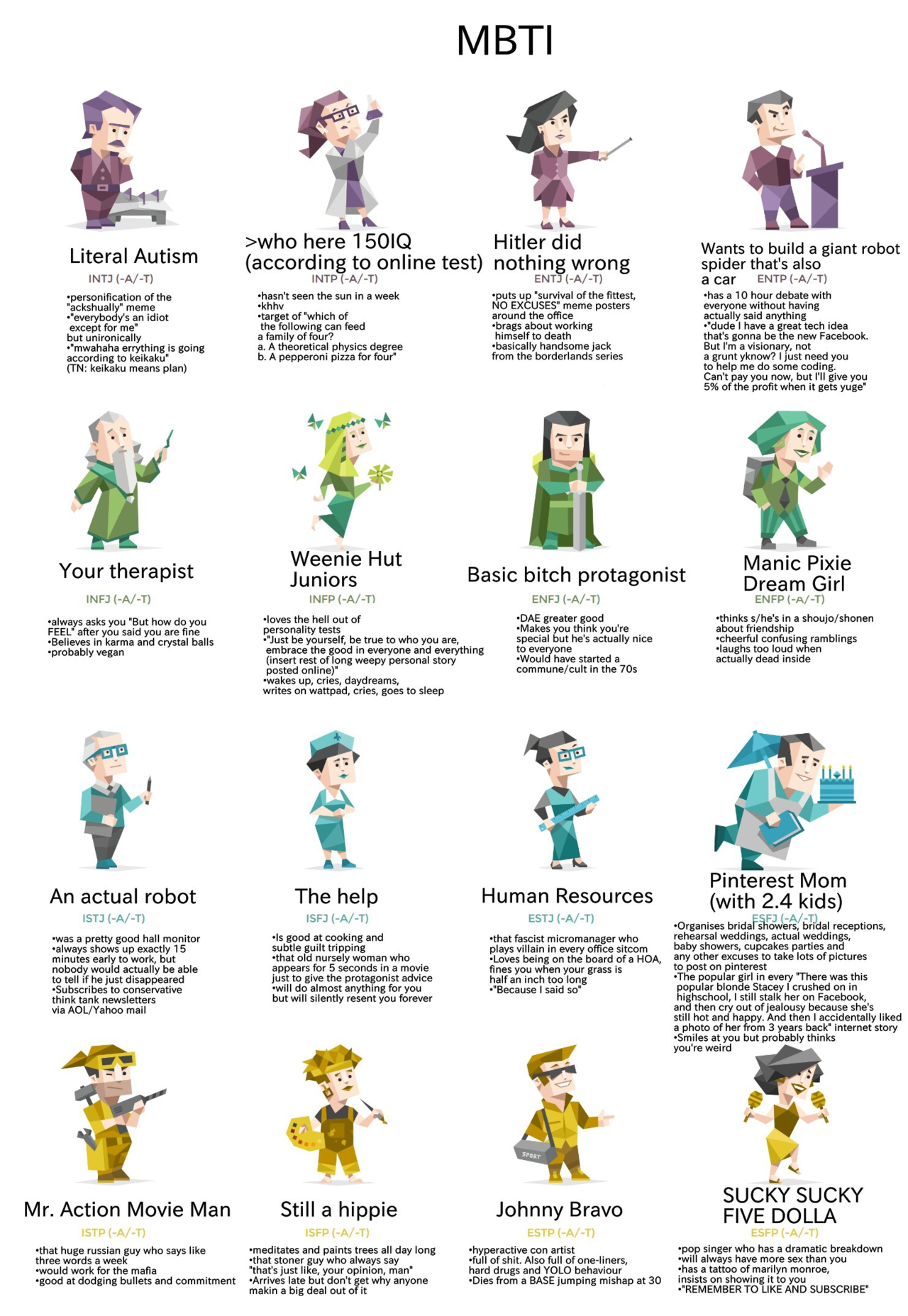

MacKinnon, head of the Institute of Personality and Social Research at the University of California, Berkeley W. The MBTI received further support from Donald W. Under these auspices, the first MBTI "manual" was published, in 1962. Myers' work attracted the attention of Henry Chauncey, head of the Educational Testing Service, a private assessment-organization. The Briggs Myers Type Indicator Handbook, published in 1944, was re-published as "Myers–Briggs Type Indicator" in 1956. īriggs and Myers began creating their indicator during World War II (1939–1945) in the belief that a knowledge of personality preferences would help women entering the industrial workforce for the first time to identify the sorts of war-time jobs that would be the "most comfortable and effective" for them. From Hay, Myers learned rudimentary test construction, scoring, validation, and statistical methods. Hay (1891–1958), the head personnel officer for a large Philadelphia bank. Myers therefore apprenticed herself to Edward N. Īlthough Myers graduated from Swarthmore College in political science in 1919, neither Myers nor Briggs had formally education in the discipline of psychology, and both were self-taught in the field of psychometric testing.

After extensively studying the work of Jung, Briggs and her daughter extended their interest in human behavior into efforts to turn the theory of psychological types to practical use. Her first publications were two articles describing Jung's theory, in the journal New Republic in 1926 ("Meet Yourself Using the Personality Paint Box") and in 1928 ("Up From Barbarism"). Briggs's four types were later identified as corresponding to the IXXXs (Introverts: "meditative"), EXXPs (Extraverts & Prospectors: "spontaneous"), EXTJs (Extraverts, Thinkers & Judgers: "executive") and EXFJs (Extraverts, Feelers & Judgers: "social"). Īfter the publication in 1923 of an English translation of Carl Jung's book Psychological Types (first published in German as Psychologische Typen in 1921), Briggs recognized that Jung's theory resembled, but went far beyond, her own. Briggs embarked on a project of reading biographies, and subsequently developed a typology wherein she proposed four temperaments: meditative (or thoughtful), spontaneous, executive, and social. Upon meeting her future son-in-law, she observed marked differences between his personality and that of other family members. Katharine Cook Briggs and Isabel Briggs Myers extrapolated their MBTI theory from Carl Jung's writings in his 1921 book Psychological Types.īriggs began her research into personality in 1917. The indicator exhibits significant scientific ( psychometric) deficiencies, including poor validity, poor reliability, measuring categories that are not independent, and not being comprehensive. Though the MBTI resembles some psychological theories, it has been criticized as pseudoscience and is not widely endorsed by academic researchers in the psychology field.


Most of the research supporting the MBTI's validity has been produced by the Center for Applications of Psychological Type, an organization run by the Myers–Briggs Foundation, and published in the center's own journal, the Journal of Psychological Type (JPT), raising questions of independence, bias, and conflict of interest. However, she felt the book was too complex for the general public, and therefore she tried to organize the Jungian cognitive functions to make it more accessible. Isabel Myers was particularly fascinated by the concept of introversion and she typed herself as an INFP. The MBTI was constructed by two Americans: Katharine Cook Briggs and her daughter Isabel Briggs Myers, who were inspired by the book Psychological Types by Swiss psychiatrist Carl Jung. One letter from each category is taken to produce a four-letter test result, such as "ISTJ" or "ENFP". The test attempts to assign a value to each of four categories: introversion or extraversion, sensing or intuition, thinking or feeling, and judging or perceiving. Despite its popularity, it has been widely regarded as pseudoscience by the scientific community. In personality typology, the Myers–Briggs Type Indicator ( MBTI) is an introspective self-report questionnaire indicating differing psychological preferences in how people perceive the world and make decisions. A chart with descriptions of each Myers–Briggs personality type and the four dichotomies central to the theory.


 0 kommentar(er)
0 kommentar(er)
